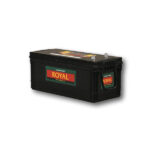
Can I mix new batteries into my old bank?
In one word “don’t.” mix batteries and add old batteries to your existing battery bank!!
Many of our customers who currently have a battery bank later desire to expand their capacity or in some cases replace batteries that have failed for one reason or another.
Mixing different batteries is never a good idea. First of all, mixing batteries which are different in type, size, brand or voltage will not even work. Worse still, it can lead to battery bank failure. And the worst case scenario is you can have batteries exploding.
When mixing same brands
If you were to mix a new battery to an old string or a new string to an older bank, the new batteries would reach their state of charge sooner than the older batteries. This could lead to them boiling. In terms of longevity, the new batteries will tend to cycle more often than the older batteries. More cycles will lead to a shorter life span for the new batteries. Typically, this will not cause the older batteries to die first, but instead reduce the lifespan of the new one you have just installed.
However, let’s say that we are working with identical batteries (exact type, size, brand and voltage), you can mix them up when the age difference between the old and new batteries is not more than 6 months. When adding new batteries to a battery bank that has been used for approximately 6 months or less. Your new batteries will tend to adopt the age of your current battery bank.
Why should you not mix batteries of different age to your battery bank.
Batteries change their parameters with age, cycling, temperature, brand, and model (talking here about lead acid batteries). You will get optimum performance with matched cells. This is applicable to all types of Lead Acid batteries.
Let’s assume you have two batteries in series. If their capacity is different and you want to avoid discharging below 50% (for long life) and below 20% State of Charge (to prevent a cell from becoming reversed biased and instant cell/battery death). You are limited to the capacity of the weakest battery of the mixed batteries in your battery pack. So, placing a “new” and “old” battery in battery pack and mix batteries, it will (usually) be the old battery that limits capacity (and the new battery will probably eventually fail first).
Old Batteries
Another issue is that old batteries have higher “self-discharge” than new. When you have two batteries in series, again old vs new the old battery will self-discharge faster. The batteries become “out of balance” with the new battery. The usual method to equalize a battery bank is to “over charge” the batteries . Good battery (force excess current through the good cells to get charging current into the low cells). Equalization is hard (in general) on lead acid batteries. It erodes the plates, uses water (or catalyst in AGM/Sealed batteries) and causes positive grid corrosion . And an out of balance battery bank. The low state of charge cells will again limit the battery pack capacity. And equalization will cause the newer battery to age faster. Equalization also increases battery temperature, a 10°C increase in battery temperature, will permit faster aging).
There are also problems with mix batteries in parallel. The idea is to design your wiring such that you have equal current flow during charging and discharging. Older batteries have higher internal resistance. (less charging/discharging current due to plate sulfation) and as they sulfate, lowering operating voltage (accept more charging current, supply less discharging current as battery voltage is proportional to specific gravity (lower specific gravity cause lower battery voltage).




